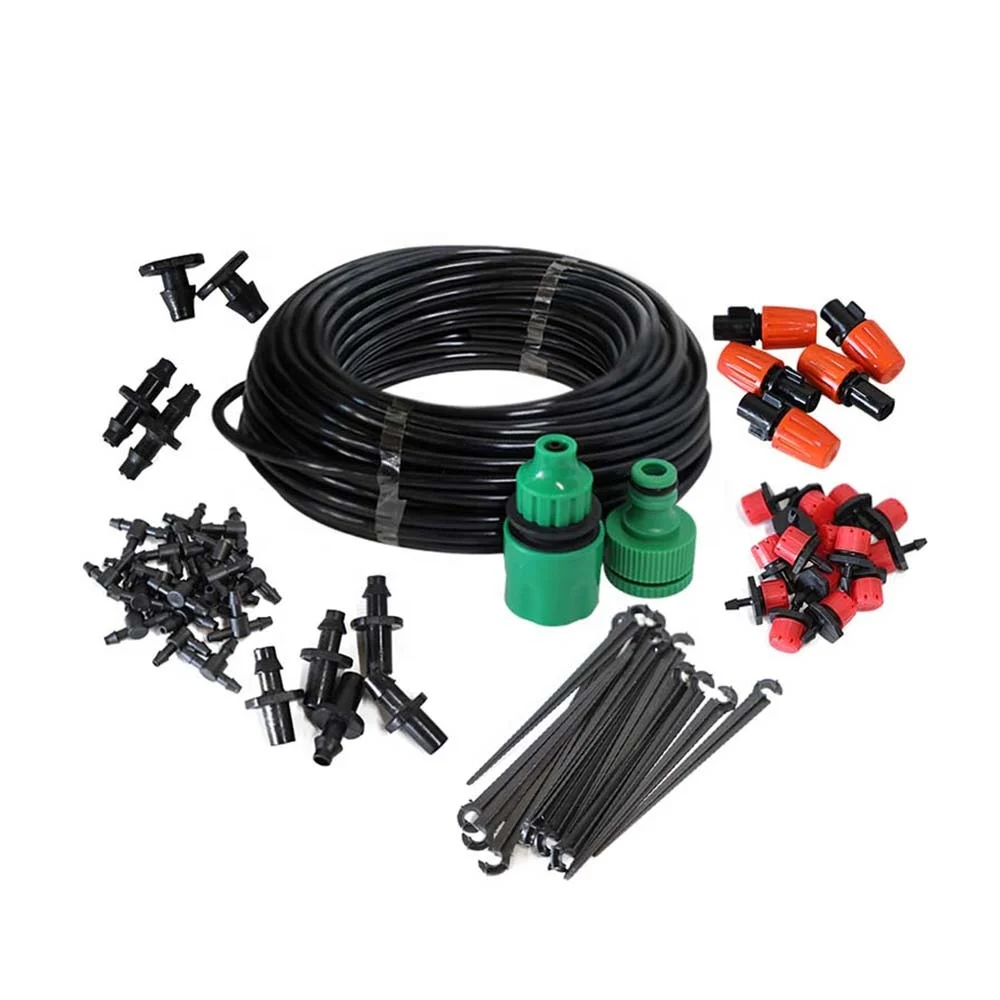How Drip Irrigation Kits Improves Yields and Saves Water for Farmers in Kenya
 Water scarcity continues to challenge farmers across Kenya, but a growing number are discovering a solution that’s transforming their agricultural success. Drip irrigation technology is helping Kenyan farmers boost their crop yields while using 60% less water than traditional methods.
Water scarcity continues to challenge farmers across Kenya, but a growing number are discovering a solution that’s transforming their agricultural success. Drip irrigation technology is helping Kenyan farmers boost their crop yields while using 60% less water than traditional methods.
From smallholder farmers with kitchen gardens to commercial growers managing multiple acres, drip irrigation systems are proving their worth. The technology delivers water directly to plant roots drop by drop, eliminating waste and maximizing every precious resource. With affordable drip irrigation kits now available for farms ranging from 1/8 acre to full acre operations, this innovation is within reach for farmers at every scale.
What Makes Drip Irrigation a Game-Changer for Kenyan Farmers?
Drip irrigation works by delivering water slowly and precisely to the root zone of plants through a network of tubes and emitters. Unlike flood irrigation or overhead sprinklers that water entire fields, drip systems target only the areas where plants need moisture most.
This targeted approach saves water, reduces evaporation losses, and prevents weeds from growing in dry areas between crop rows. The system also allows farmers to apply fertilizers directly through the irrigation lines—a process called fertigation that ensures nutrients reach plants efficiently.
For Kenyan farmers dealing with unpredictable rainfall and rising water costs, drip irrigation offers a reliable solution that works regardless of weather conditions.
Key Benefits Transforming Farm Productivity
Water Efficiency Beyond Compare
Farmers using drip irrigation report water savings of up to 60% compared to traditional methods. This efficiency becomes crucial during dry seasons when water sources become scarce and expensive.
Doubled Crop Yields
The precise water delivery and improved growing conditions help many farmers double their produce output. Tomato farmers, in particular, have seen remarkable improvements in both quantity and quality of their harvests.
Natural Pest and Weed Control
Since water only reaches planted areas, weeds struggle to establish themselves between rows. The dry soil surface also reduces habitat for many common pests, cutting down on pesticide needs.
Enhanced Fertilizer Management
Fertigation through drip systems ensures nutrients go directly to plant roots rather than being washed away. This targeted approach reduces fertilizer costs while improving plant nutrition.
Choosing the Right Kit Size for Your Farm
1/8 Acre Drip Irrigation Kit
Perfect for kitchen gardens and small vegetable plots, this system suits farmers growing sukuma wiki, spinach, and herbs for household consumption or local market sales. See details of the 1/8 acre kit
1/4 Acre Drip Irrigation Kit
Ideal for small-scale vegetable farmers focusing on tomatoes, capsicum, or cabbages. This size provides enough coverage for meaningful income generation while keeping initial investment manageable. See details of the 1/4 acre kit.
1/2 Acre Drip Irrigation Kit
Suited for medium-scale farmers growing for established markets. This system can support diversified vegetable production or dedicated cash crops like passion fruit or strawberries. See details of the 1/2 acre kit
1 Acre Drip Irrigation Kit
Designed for commercial horticulture operations, this comprehensive system supports large-scale production of high-value crops including avocados, macadamias, and export vegetables. See details of the 1 acre kit.
Crops That Thrive with Drip Irrigation
Vegetables like tomatoes, sukuma wiki, capsicum, spinach, and cabbage respond exceptionally well to drip irrigation. The consistent moisture levels help these crops develop strong root systems and produce higher yields.
Fruit crops including watermelons, passion fruit, strawberries, and bananas also benefit significantly. The controlled watering prevents fruit cracking and ensures consistent quality that commands premium market prices.
Cash crops such as coffee, tea seedlings, avocados, and macadamias show improved establishment rates and faster growth when irrigated through drip systems.
Real Success Stories from Kenyan Farmers
One of our customers from Kiambu County installed a 1/4 acre drip system for her tomato farm last year. In her own words “Before drip irrigation, I harvested about 300 crates per season. Now I consistently get a little over 500 crates from the same plot,” she explains. The improved yields helped her recover her initial investment within eight months.
James Mwangi, a watermelon farmer in Machakos County, saw similar results. His 1/2 acre drip system enabled him to grow three seasons annually instead of relying on unpredictable rains. “My income tripled, and I’m using half the water I used with flood irrigation,” he reports.
Simple Installation and Maintenance
Installing a drip irrigation system requires basic planning and minimal technical skills. The process involves connecting water storage tanks to main distribution lines, then branching into drip lines for each crop row.
Regular maintenance includes cleaning filters, flushing lines monthly, and checking emitters for clogs. These simple tasks prevent system failures and ensure optimal performance throughout growing seasons.
Water storage remains crucial for system success. Farmers can use elevated tanks, connect to existing dams, or tap into shallow wells depending on their water sources.
Smart Investment for Kenya’s Agricultural Future
Drip irrigation represents more than just a farming tool—it’s a pathway to climate-smart agriculture that addresses water scarcity while boosting food security. As weather patterns become increasingly unpredictable, farmers with efficient irrigation systems maintain competitive advantages.
The technology supports Kenya’s agricultural modernization goals while helping individual farmers build sustainable, profitable operations. Every farmer who adopts drip irrigation contributes to national food security while securing their own economic future.
For farmers ready to transform their operations, starting with an appropriately sized drip kit offers the perfect entry point. Whether you’re managing a small kitchen garden or planning commercial production, the right drip irrigation system can double your harvests while cutting your water costs in half.